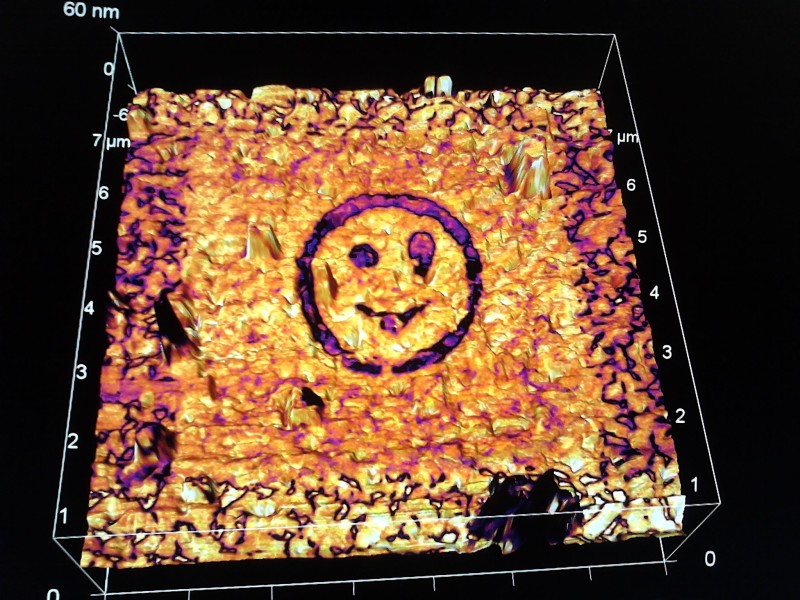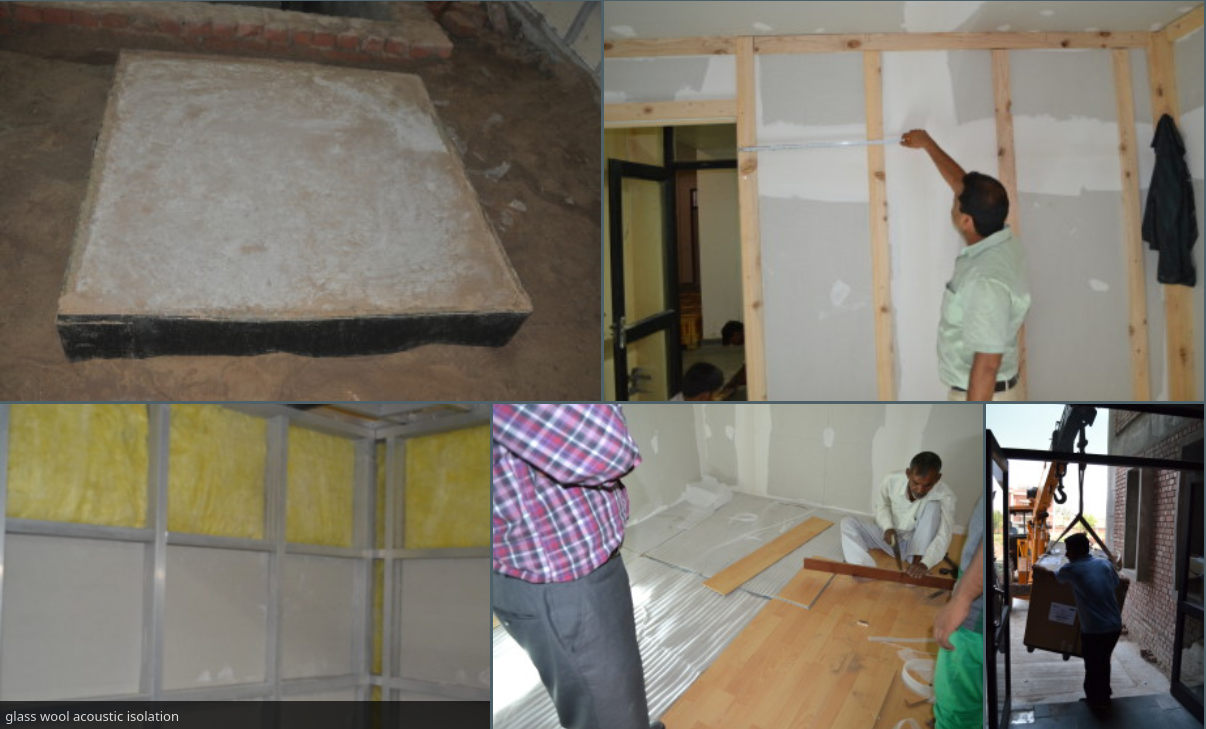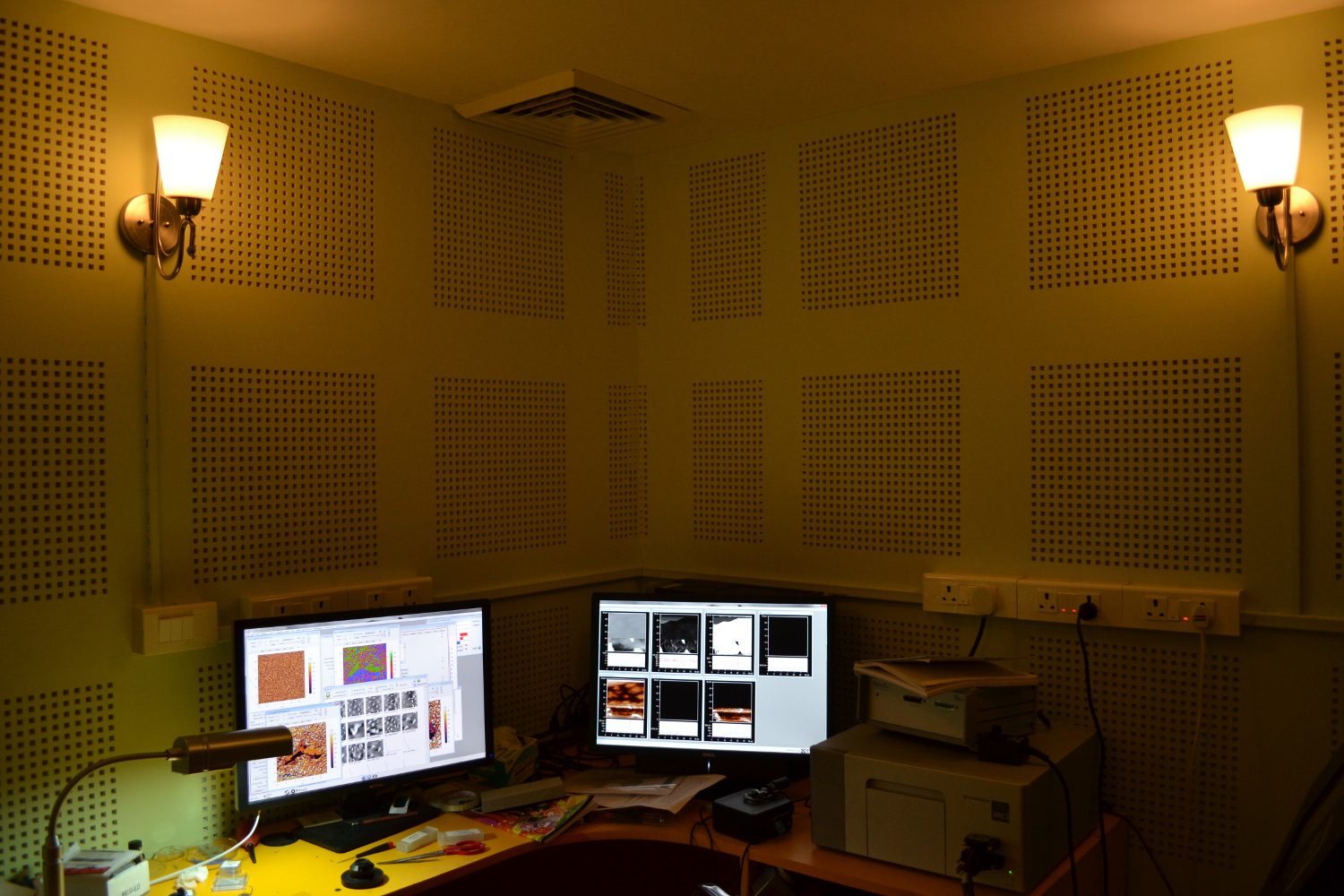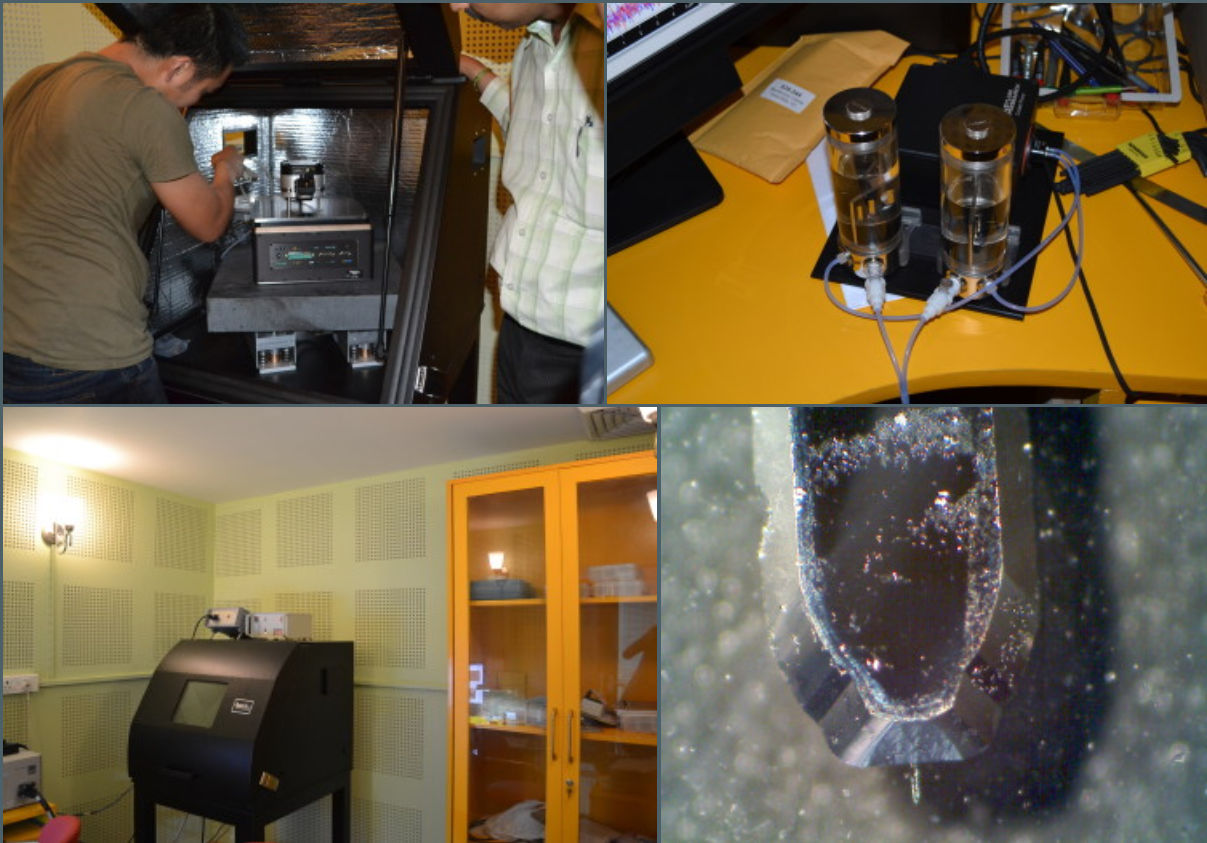Atomic Force Microscope
Masters at IISER Mohali | Links:

Room temperature AFM with Piezo force microscopy and EFM. Domains were created on a BFO sample using lithography, and imaged .
A pictorial walkthrough of the installation of the He-4 based Cryostat at the SpinLab, IISER Mohali. This cryostat is equipped with a 3-axis vector magnet and a dynamic VTI capable of cooling samples down to 2 Kelvin.
Construction of the AFM room with Acoustic and Vibration Isolation setup

The AFM sits on a solid block of RCC for vibration dampening. In addition, it has its own vibration dampening table, as well as an acoustic isolation chamber. The entire room is acoustically isolated with multiple layers of glass wool and neoprene.

Very cosy and quiet imaging room

Close up shots of the liquid cooler, the AFM, and the tip with a liny cantilever which does the actual scanning part.
Publications
I have Co-Authored a paper on the surface topography of moth wings imaged with this AFM, which includes a discussion on the relevance of the discovered patterns in the flight of winged insects. It appeared in Applied Physics Letters http://scitation.aip.org/content/aip/journal/apl/104/6/10.1063/1.4865202 and the the following is the Abstract .
Applied Physics Letters : Abstract
We report on the measurement of local friction and adhesion of transparent insect wings using an atomic force microscope cantilever down to nanometre length scales. We observe that the wing-surface is decorated with 10 μm long and 2 μm wide islands that have higher topographic height. The friction on the islands is two orders of magnitude higher than the back-ground while the adhesion on the islands is smaller. Furthermore, the high islands are decorated with ordered nano-wire-like structures while the background is full of randomly distributed granular nano-particles. Coherent optical diffraction through the wings produce a stable diffraction pattern revealing a quasi-periodic organization of the high islands over the entire wing. This suggests a long-range order in the modulation of friction and adhesion which is directly correlated with the topography. The measurements unravel novel functional design of complex wing surface and could find application in miniature biomimetic devices.

Domains were created on a BFO sample using lithography, and imaged .
